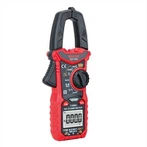What is the difference between hot ground and cold ground in oscilloscope measurements?
Hot ground refers to the grounding terminal of the primary transformer in the power circuit (such as the switching transformer in a switching power supply). It is connected to the phase line or change of the power supply line of the power grid. It is a hot ground. In the circuit diagram, the grounding icon is connected to the cold ground, There is a difference in protective grounding.
Cold ground usually refers to the secondary side of the power circuit transformer and the negative pole of the DC power after rectification and filtering. Due to the isolation function of the transformer, it is not connected to the power grid.
There is also a protective ground on the oscilloscope, which is generally connected to the oscilloscope case and the negative pole of the power supply inside the oscilloscope. It is also connected to the ground wire of the power input line and connected to the earth.
If you need to measure a hot ground circuit, you must install a 1:1 isolation transformer on the power supply of the electrical appliance under test. Otherwise, the phase line or neutral line in the circuit under test passes through the ground clamp on the oscilloscope probe and the oscilloscope's protective ground wire. If a loop is created with the earth, at least it will cause the leakage protector of the power supply line to operate and the circuit under test or the oscilloscope to be burned. At worst, it will cause a safety accident! Hope to attract attention.
Hot ground is electrified, and it is connected to the earth and can electrify people. Cold ground is not in the same circuit as the earth, and it cannot electrify people.
How to use digital oscilloscope in analog circuits?
(1) The grounding problem of the oscilloscope. The casing of the oscilloscope and the reference ground wire of the probe are both connected to the ground wire. Therefore, good grounding is the primary condition for measuring interference.
(2) The problem of interference introduced by the reference ground wire of the oscilloscope. Since ordinary probes usually have a ground wire, they will form an interference path similar to a loop antenna with the point to be measured, introducing relatively large interference. Therefore, this interference should be minimized. , the method that can be adopted is to remove the probe cap, do not use the ground wire drawn from the probe, and directly use the probe tip to contact the point to be measured for measurement.
(3) Use differential measurement method to eliminate common mode noise. Tektronix provides a series of differential probes, such as the ADA400A, which is specially designed for small signals and can measure hundreds of microvolts, and the P7350, which is used for high-speed signal measurement, provides a bandwidth of up to 5 GHz.
(4) Many Tektronix oscilloscopes provide high-resolution acquisition (Hi-Res) signal capture mode, which can filter random noise superimposed on the signal.






